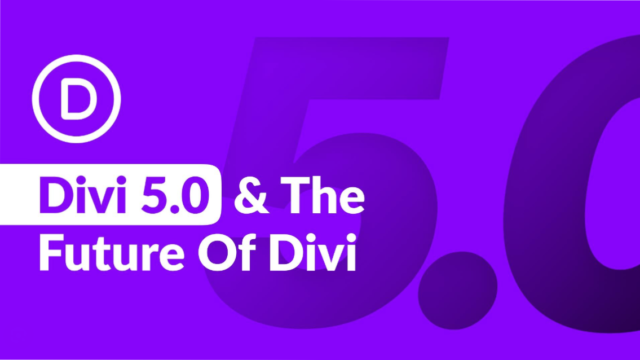Hey there! Today, we’re pitching headfirst into WordPress security—an often overlooked but absolutely crucial part of keeping your website up and running. We’ll get into everything you need to know about fending off hackers, guarding against malware, and, heaven forbid, dealing with a breach if it happens. It’s wild when you think about it: thousands of WordPress sites get hacked every single day. Yeah, you read that right—over 13,000 daily! It’s like a whole small town getting wiped off the map, digitally speaking. So, buckle up because this stuff is no joke.
The Common Culprit: Outdated Plugins
So, what’s one of the most common ways hackers wiggle their way into WordPress sites? You might be surprised, but it’s usually through outdated plugins. Yup, those nifty little add-ons that make your site super functional can turn into a hacker’s dream if left unpatched. In fact, studies show that more than half of all WordPress hacks can be traced back to some vulnerability in a plugin that hadn’t been updated. It’s kind of like leaving your back door wide open—anyone can stroll right in.
I have to admit, I’m guilty of letting my updates slide sometimes. It starts with a little notification on the dashboard saying, “Hey, you’ve got 10 updates pending!” and next thing you know, you’ve got a mountain of them to catch up on. It’s worth taking the time to hit that update button for your plugins, themes, and WordPress core itself. Think of it as taking your site in for a tune-up—keeping it in top shape.
Pro Tip: Try updating everything at once. Sometimes, updating one thing at a time can create conflicts if some plugins aren’t compatible with the newer versions of WordPress or other plugins. Doing it all in one go can help avoid these headaches.
The Safety Net: Backups Are Your Best Friend
If there’s one thing I’ll say until I’m blue in the face, it’s “backup, backup, backup!” Before making any major updates, or just as a regular habit, keep a copy of your site tucked away. Trust me, when things go south (and they can), having a backup to fall back on can be a lifesaver. It’s like an insurance policy; you hope you never need it, but boy, are you glad it’s there when you do.
There are plenty of plugins that make this a breeze, like UpdraftPlus or WPvivid. These tools don’t just back up your site—they let you store those backups offsite, like in the cloud. It’s an extra layer of protection and saves space on your server. So, before you make any significant changes, hit that backup button.
Don’t Make This Username Mistake
Here’s one that always makes me cringe: using “admin” as your username. It’s a rookie mistake that hackers love because it’s the default for WordPress, and if you haven’t changed it, they’re already halfway through the door. Fortunately, changing your username is easy, especially with plugins like Easy Username Updater. Just make sure to choose something unique—your pet’s name or your birthday probably isn’t the best idea.
Strong Passwords Are a Must
Passwords, oh passwords. We could spend an entire day talking about them, but let’s just hit the highlights. They’re your first line of defense, so you need to make them count. The days of thinking that a mix of uppercase letters, numbers, and a special character at the end are enough are long gone. Hackers now have software that can crunch through those patterns in no time.
These days, longer (NOT LESS THAN 22 CHARACTERS) and more random is the way to go. Keep the bad guys busy for nothing. Think about using a string of unrelated words, or a phrase that’s memorable to you but hard for others to guess. Additionally, avoid using the same password on different websites for the sake of security. Like dominoes falling, all of your accounts are at risk if one website is compromised. This is where a password manager can save your sanity—it generates and stores those complex passwords for you.

Add a Second Layer: Two-Factor Authentication
You know what they say: two locks are better than one. You can think of two-factor authentication (2FA) as an additional padlock for your front door. Even if someone manages to get hold of your password, They will still need to pass the second security step, which typically entails collecting a code by email or phone. It’s just another way to make life harder for hackers and easier for you.
Firewalls: WordPress Security Digital Bouncer
Okay, let’s talk firewalls. I know it sounds technical, but think of a firewall as your website’s bouncer. It monitors incoming traffic and kicks out anything that looks suspicious, keeping the digital riff-raff at bay. There are two main types to know about for WordPress sites: plugin-based firewalls and web application firewalls (WAFs).
A plugin-based firewall runs directly on your server and guards against the most common threats—it’s like having a security guard posted at your door. On the other hand, a WAF goes further. It sits on the cloud and acts as the first line of defense, filtering out bad traffic before it even reaches your site. Imagine having a checkpoint at the edge of your property that only lets trustworthy visitors in. Cloudflare is a popular choice for this, and they even offer a free plan that’s perfect for small to medium-sized sites.
When the Worst Happens: Recovering From a Hack
No matter how well-prepared you are, sometimes bad things still happen. If you ever wake up to find your site defaced or links redirecting to shady corners of the internet, the first thing to do is not panic. I know, easier said than done, but hear me out—disconnect your site from the web to stop any further damage. It’s like hitting the emergency stop button.
Next, assess the damage. Figure out what’s been affected—has the code been altered? Are there signs of malware? It’s like doing digital detective work to piece together how everything went down.
If you’ve been diligent with backups, now’s the time to use them. Restoring a clean backup can often be the quickest way to get back on your feet, but be cautious—ensure the backup itself isn’t infected. If that backup isn’t an option, it might be time to call in the pros. There are services out there that specialize in WordPress cleanup, and they’re like the hazmat team for hacked websites.
Preventing Future Attacks: Learning From the Past
Once your site is clean and back online, it’s time to figure out how the hackers got in. Was it an outdated plugin, a weak password, or something else entirely? Understanding this can help you plug the gaps and beef up your defenses going forward. It’s like solving a mystery and then using the clues to reinforce your security.
Brute Force Attacks: What They Are and How to Avoid Them
Ever heard of a brute force attack? It’s essentially a hacker’s way of trying to break into your site by repeatedly guessing different password combinations until one works. Imagine someone at your door trying every single key on a massive keyring. If your password isn’t strong enough, they’ll eventually get in. That’s why those complex, lengthy passwords we talked about earlier are so critical.
To help fend off these attacks, many security plugins let you limit the number of login attempts. For example, if someone makes three unsuccessful attempts to log in, they’re temporarily locked out. It’s like a digital security system that triggers when too many wrong codes are entered.
Enhancing Internal Security: User Roles and Permissions
We’ve spent much time discussing keeping hackers out, but what about securing things from the inside? This is where internal security measures come into play. In WordPress, user roles like administrator, editor, author, contributor, and subscriber each come with different capabilities. It’s crucial to assign roles based on the principle of least privilege, which means giving users only the permissions they need.
Think of it like an office building; not everyone should have a master key to every room. Review your user list regularly and make sure you’re not holding on to old accounts, especially after employees leave or contractors finish their projects. It’s like changing the locks when someone moves out—better safe than sorry.
Advanced Security Techniques: Going the Extra Mile
If you’re feeling ambitious, there are some more advanced measures you can take to bolster your WordPress security. One often overlooked aspect is database security. Your database is the heart and soul of your site, storing all your content and user data. A simple yet effective tactic is changing the default database prefix from “wp_” to something unique. It’s a minor tweak that makes life a bit tougher for potential attackers.
Another technique is setting up security headers. These are like special instructions that tell browsers how to handle your site’s content. For example, you can use HTTP Strict Transport Security (HSTS) to force browsers to communicate with your site only over HTTPS, which helps prevent man-in-the-middle attacks. You can also set up X-Frame-Options to protect against clickjacking. It might sound like tech jargon, but many security plugins have built-in options to help you configure these settings without much hassle.
A Backup Plan for Your Backup Plan
No matter how secure you make your site, always prepare for the worst. This means having multiple backups in different locations and keeping an eye on your site’s activity logs for any unusual changes. It’s like setting up security cameras around your digital property—it’s better to catch a potential threat early than deal with the aftermath.
When it comes down to it, keeping your WordPress site secure is all about staying ahead of the game. It’s not something you can set up once and forget about; it requires ongoing attention, especially as new threats keep popping up. The key is to stay vigilant with a mix of solid strategies—like using strong passwords, keeping everything updated, setting appropriate user roles, and even taking some advanced security steps.
Keep the bad guys busy for nothing. Use 22 characters or more. – F Wiafe
On top of all that, don’t overlook the basics: make sure the computer you’re working from is well-protected, too. Installing reliable antivirus software is a must, and personally, I love AntiVirus Software. It’s my go-to for keeping my devices safe. With the proper precautions in place, you’ll be able to build a solid defense around your WordPress site and keep it secure from whatever comes your way.
Stay tuned because we’ll be diving even deeper into these topics in the next part of our series. There’s always more to learn when it comes to keeping your WordPress site safe and sound. Until then, keep your digital doors locked and your defenses strong!
If you have forgotten some of the important key areas we discussed, here are the Six Key Takeaways you always keep in mind.
1. Regular Updates Are Non-Negotiable
- Always keep your WordPress core, themes, and plugins updated to their latest versions. Outdated software is a major vulnerability, often exploited by hackers to gain unauthorized access. Think of updates as essential maintenance—like regularly changing the oil in your car.
2. Strong Passwords and Two-Factor Authentication Are Your First Line of Defense
- A strong password should be long, random, and unique. Avoid predictable patterns. Pair this with two-factor authentication (2FA) for an added layer of security, ensuring that even if a password is compromised, hackers still can’t easily access your site.
3. Backups Are Your Insurance Policy
- Regularly backing up your website can be a lifesaver in the event of a hack or data loss. Use reputable backup plugins and store backups offsite for extra protection. It’s better to be prepared than to scramble for solutions during a crisis.
4. User Roles and Permissions Should Be Set Strategically
- Apply the principle of least privilege: Only grant users the access they need to perform their tasks. Avoid using default usernames like “admin” and enforce strong password policies for all users to minimize internal security risks.
5. Firewalls Act as Your Website’s Digital Gatekeeper
- Implement both plugin-based and web application firewalls (WAFs) to filter incoming traffic and block malicious requests before they reach your server. This layered approach can help keep out hackers and other potential threats.
6. Have a Recovery Plan for Worst-Case Scenarios
- Be prepared for the possibility of a breach. Know the steps to take if your site is compromised, including disconnecting from the internet, assessing damage, restoring clean backups, or calling in professional help. Regularly monitoring your site’s activity logs can also help detect issues early.
By keeping these takeaways in mind, you can significantly improve your WordPress site’s security and reduce the risk of future attacks.






